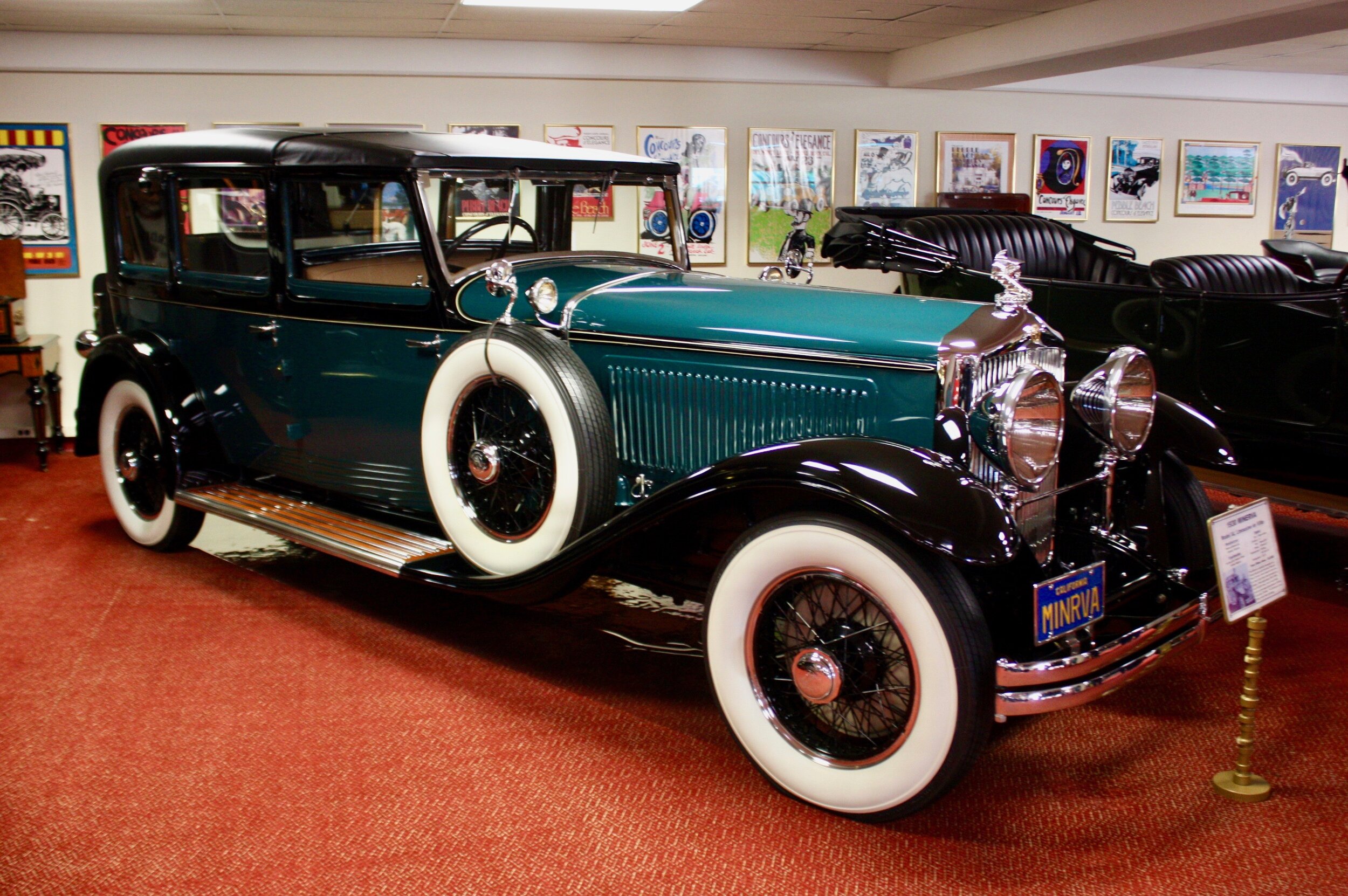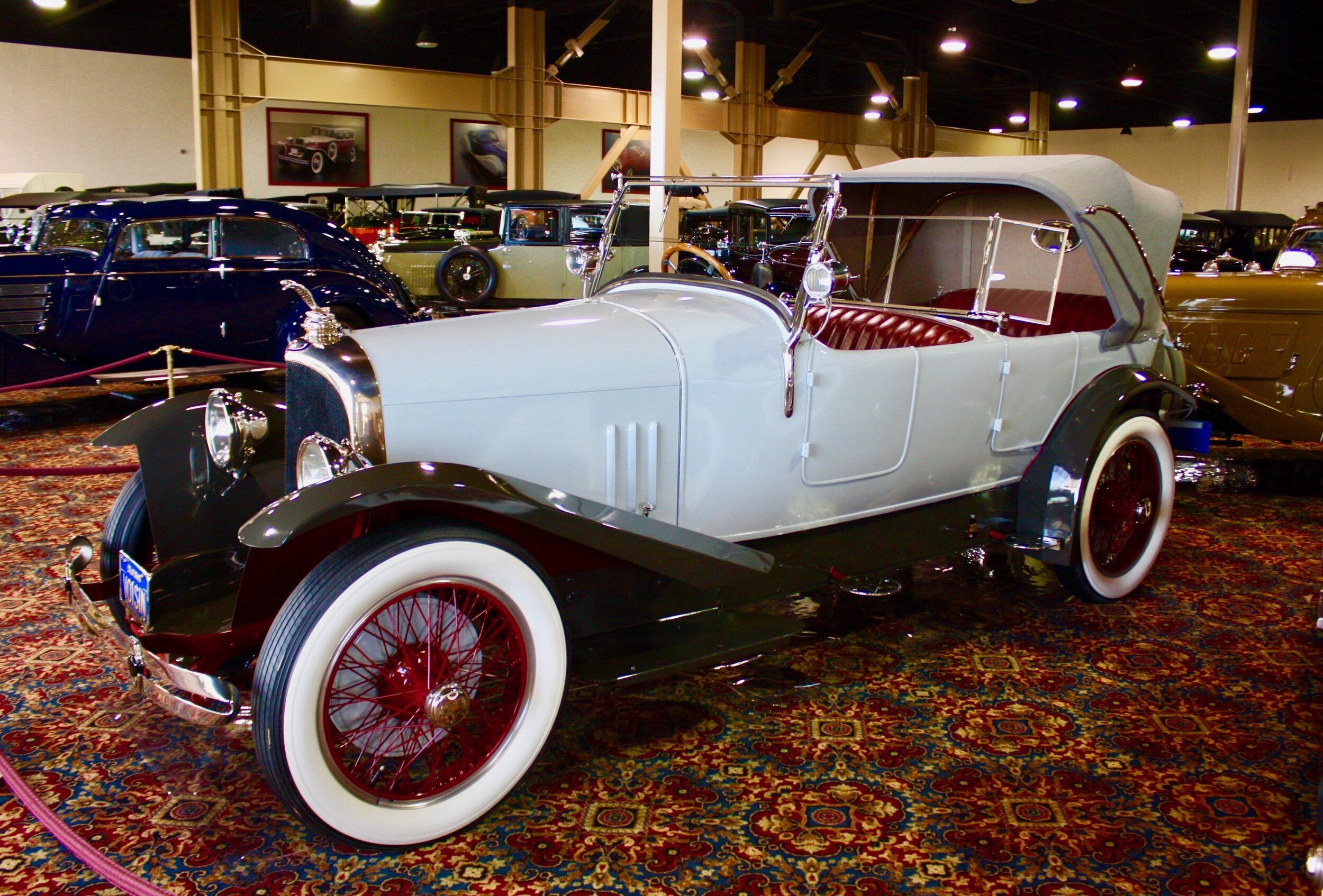The Nethercutt Collection
/A few weeks ago - before the world shut down - I was able to drive down to Sylmar, CA north of Los Angles to see The Nethercutt Collection. For years I had seen it writen in various reviews that this was one of the five or 10 best car museums in the world. I had never seen it. Niether had my friend Steve Stern, who is turning 80 this year. So we decided to celebrate the momentous event with a 400-mile sojourn south. The commentary I had read was not hype. The Netheructt is magnificent!
1932 Auburn Custom Cabriolet
The Nethercutt is actually two separate facilities, the Museum and the Collection. A visit to the Museum requires booking one of two daily guided tours. The Collection is open for browsing from 9am-4:30pm. They are right across the street from each other. I am tempted to say the best part is that it’s all free. Admission is indeed free - but that’s not the best part at all. That honor of course belongs to the cars.
1935 Pierce Arrow Model 845
We took the Museum tour first. You gather in the lower salon. This is essentially the building’s basement…but it’s the basement of your dreams. There are two dozen or so cars displayed down here, each of them guarenteed to put a smile on your face.
This is a 1910 Royal Tourist and it is indeed fit for royalty. Seeing it, we understand immediately why they call that time period the ‘Brass Era”
1910 Royal Tourist Roadster
Also pretty brassy was this 1912 ALCO Touring car made by the American Locomotive Company. When scrolling though my photos, my 12-year old daughter said, “I want that one, Daddy.” So do I, my dear, so do I.
1912 ALCO 9-60 Touring Car
If you were a Belgian aristocrat, and hadn’t lost your inheritence in the Crash of ‘29, this Minerva De Ville was your car.
1930 Minerva Model AL Limousine de Ville
The cars don’t seem to be displayed in any particular order. That is probably because the collection is not static. Every car in the collection runs, and is driven at least once a year. All except one. It is mildly ironic that the newest car in the collection is the only one that is underivable.
1997 GM EV-1
Once the attendees have had some time to look at the cars in the basement, the tour heads upstairs to the Grand Salon. This floor is laid out like a luxury car showroom you might have found in 1930s New York or Chicago. If the downstairs display didn’t blow your socks off, you may want to invest in a defibulator. And you will certainly need it when you get upstairs. The finest of fine art museums in the world pale in comparison…ok, I’m a Car Guy.
Emerging into the Grand Salon. I missed the first few minutes of what our tour guide was saying. That is because the first thing I saw upon entering was this Hispano-Suiza, and my brain temporarily shut down. This is the best photo I could manage and it does the car no justice. Nor do words. The French must have an appropriate adjective, but English comes up short.
1933 Hispano-Suiza J-12 Coupe de Ville
I recovered my senses just in time to lose them again. Before these two companies merged in 1926, Mercedes (Daimler) and Benz were Germany’s two finest carmakers. This Mercedes (sans Benz) Double Phaeton “Torpedo” was the fastest, most powerful car in the world in 1913.
1913 Mercedes 37/95 Double Phaeton Torpedo
It seems crazy to say it gets even better, but it gets even better…
The car in front is a 1931 Ruxton Model C Front Drive. Next is a 1933 Duesenberg SJ Rollston Torpedo, which the curator called the colection’s crown jewel. I won’t argue with him. Next is a Packard whose color mesmorized me to the degree where I forgot to note the model and year. Then a 1933 Duesenberg SJ Roadster, and finally a 1934 Packard 1101 Coupe Roadster.
Wow!
The museum houses more than cars. The next level up is the mezzanine which displays the numorous awards the collection has amassed. Mr Nethercutt’s cars have won Best in Show at the Pebble Beach Concours d’Elegance 6 times, more than anyone else.
The top floor has no cars. It is dedicated to music. There are music boxes, player pianos, orchestrions (including one that simulates a 20 piece orchestra) and a pipe organ with 11,000 pipes that must be experienced to be believed. And like the cars, every one of them works.
When the museum tour was over, we made our way downstairs and back to the building across the street that housed The Collection. That would be 120 more cars! Again, they are not arranged chronologically, nationally or by maker, because they rotate in and out to be driven. Keeping with that theme, here are some of my favorites in no particular order.
Gabriel Voisin was a renound French aircraft designer. During WW1 he was horrified by the death and destructioned inflicted by his aeroplanes. So after the war he turned his considerable talents toward making some of the most advanced cars in the world. Silent film star Rudolph Valentino, a well-known Car Guy, was on a tour of Europe. When he came across a Voisin, he went out and bought three of them. Reportedly, this was Rudy’s favorite.
1923 Voisin C-5 Sport Victoria once owned by silent film star, Rudolph Valentino
During the Classic Era, many of the Chrysler Imperial’s peers were offering twelve or even sixteen cylinders. Walter Chrysler, being a conservative man, deemed eight as enough. Seeing as his company’s 384 cu in “Red Head” eight, made silky-smooth with 9 main bearings, could propel the 5,000lb car to over 100mph, it seems he was right. And, when a car looks this good, one loses track of the cylinder count.
1932 Chrysler CL Imperial Convertible Coupe
Three years before it became the fondation on which General Motors was built, Buick was making fantastic cars. The Buick Motor Company, however, was failing. Like so many early automotive entrepreneurs, David Dunbar Buick was a brilliant engineer and a terrible businessman.
1905 Buick Model C Touring
This 1928 Isotta-Franschini is the most elegant car I have ever seen. I am simply not a good enough photographer to do it justice.
1928 Isotta-Franschini Model 8A Landaulet Cabriolet
What a joy to come upon an American Underslung. This is my favorite Pre-WW1 car. It was 10” lower than the typical car of the day. It’s low, sleek profile was achieved by essentially turning the frame upside down and mounting the springs above the axles. This photo I’m actually pretty pleased with.
1914 American Underslung Model 644 Touring
Most cars in the Collection were made before 1942, but not all. There are a few newer cars, and they are stunning as well.
Like the Underslung, the Hudson Hornet was also lower and sleeker than all other cars when it debuted. The Hudson’s interior floor was dropped down into the frame for a much lower center of gravity. No American car handled curves like a Hudson. Which is why it utterly dominated stock car racing from 1951-53, and was the inspiration for Doc Hudson in the PIXAR movie Cars. This convertible could be Doc in vacation mode.
1952 Hudson Hornet Convertible with Twin-H power
Sorry for the blurry picture here. Not only did this MG TC’s unbelievably perfect color cause my hands to shake, it also shook me of the belief that British Racing Green is always the best color for British sports cars.
1948 MG TC
And finally, my favorite car in the Collection hall was one I’d never heard of. Kenworthy was a new luxury maker that used Duesenberg engines (this was before there were Duesenberg cars) Kenworthy launched in 1920, just as the nation was plunging into a severe post WW1 recession. Only 214 cars were ever made, and this is the only known survivor. Thank you, Mr Nethercutt!
1920 Kenworthy 4-80 Touring Car
J.B. Nethercutt purchased his first classic car - a 1930 DuPont Model C Merrimac - in 1956. The restoration took 18 months, and was completed in time for the ninth Pebble Beach Concours d’Elegance in 1958. There it took Best in Show honors. His cars won 3 more times before the Museum openned in 1972, and twice more since. The cars in his collection must have cost a fortune - a fortune that Mr. Nethercutt made co-founding Merle Norman Cosmetics. The appriciation of beauty was in his bones. Before he died, he wrote, “The recognition and restoration of beauty has been a major focus in my life. It would suit me well if what people remmembered about me was, ‘Where he went, he left beauty behind.’” After seeing the Nethercutt Collection, I can’t imagine he left this world with many regrets. The collection is now maintained by J.B.’s son, Jack, who, from my perspective, does his father, and the world, proud.
Copyright@2020 Photos and words by Mal Pearson






















